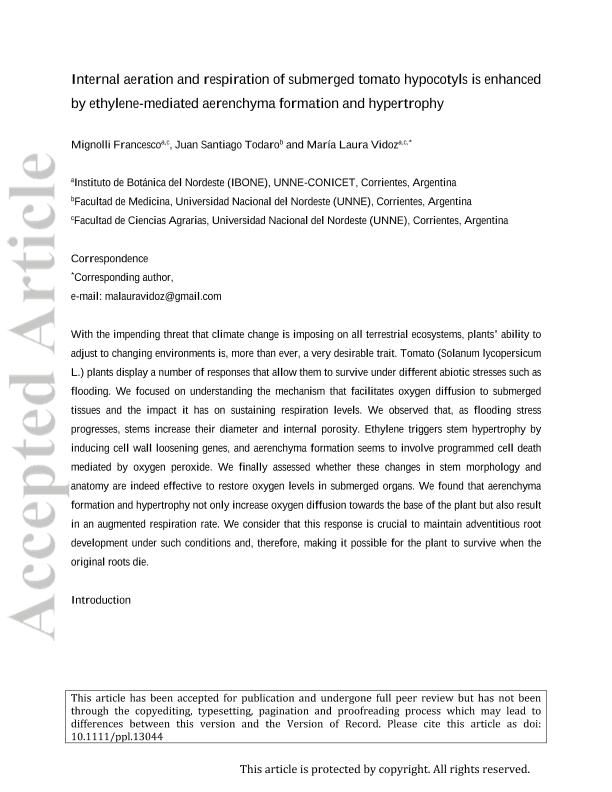Artículo
Internal aeration and respiration of submerged tomato hypocotyls is enhanced by ethylene‐mediated aerenchyma formation and hypertrophy
Fecha de publicación:
11/2019
Editorial:
Wiley Blackwell Publishing, Inc
Revista:
Physiologia Plantarum
ISSN:
0031-9317
Idioma:
Inglés
Tipo de recurso:
Artículo publicado
Clasificación temática:
Resumen
With the impending threat that climate change is imposing on all terrestrial ecosystems, plants ability to adjust to changing environments is, more than ever, a very desirable trait. Tomato (Solanum lycopersicum L.) plants display a number of responses that allow them to survive under different abiotic stresses such as flooding. We focused on understanding the mechanism that facilitates oxygen diffusion to submerged tissues and the impact it has on sustaining respiration levels. We observed that, as flooding stress progresses, stems increase their diameter and internal porosity. Ethylene triggers stem hypertrophy by inducing cell wall loosening genes, and aerenchyma formation seems to involve programmed cell death mediated by oxygen peroxide. We finally assessed whether these changes in stem morphology and anatomy are indeed effective to restore oxygen levels in submerged organs. We found that aerenchyma formation and hypertrophy not only increase oxygen diffusion towards the base of the plant but also result in an augmented respiration rate. We consider that this response is crucial to maintain adventitious root development under such conditions and, therefore, making it possible for the plant to survive when the original roots die.
Palabras clave:
TOMATO
,
FLOODING STRESS
,
ETHYLENE
,
AERENCHYMA
Archivos asociados
Licencia
Identificadores
Colecciones
Articulos(IBONE)
Articulos de INST.DE BOTANICA DEL NORDESTE (I)
Articulos de INST.DE BOTANICA DEL NORDESTE (I)
Citación
Mignolli, Francesco; Todaro, Juan Santiago; Vidoz, María Laura; Internal aeration and respiration of submerged tomato hypocotyls is enhanced by ethylene‐mediated aerenchyma formation and hypertrophy; Wiley Blackwell Publishing, Inc; Physiologia Plantarum; 11-2019; 1-28
Compartir
Altmétricas




